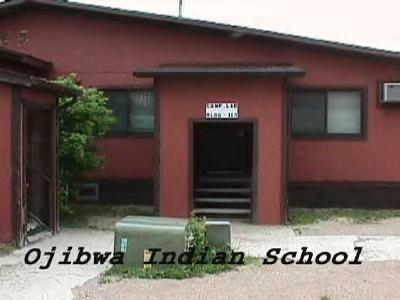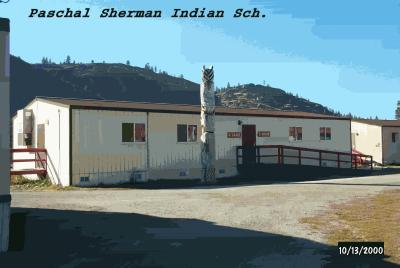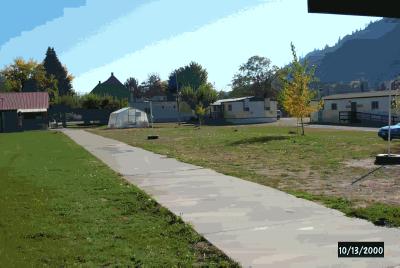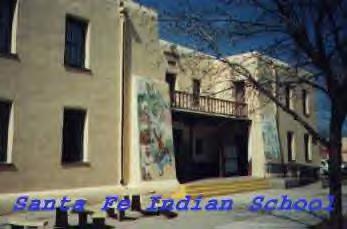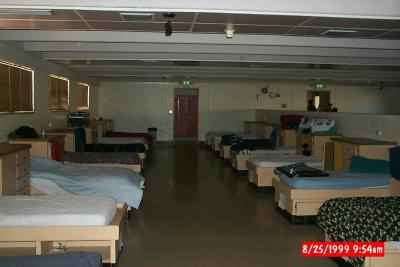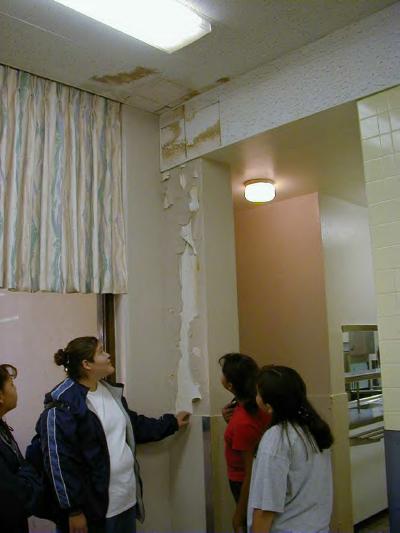|
|
Canku Ota |
|
|
(Many Paths) |
||
|
AN Online Newsletter Celebrating Native America |
||
|
april 21, 2001 - Issue 34 |
||
|
|
||
|
School News-Special Report |
||
|
gathered by Vicki Lockard |
||
|
The information here will include items of interest for and about Native
American schools. |
||
|
|
||
|
President Bush’s FY2002 BIA Education Budget |
||
| President Bush’s pledge on education that "no child shall be left behind" was
reaffirmed today with the release of his Fiscal Year 2002 budget request of $2.2 billion for the Bureau of Indian
Affairs (BIA). The request includes $292.5 million for BIA school construction – an increase of $162,000 over the
2001 enacted level – of which $122.8 million is to replace six aging BIA school facilities around the country,
including the Holbrook Dormitory located in Holbrook, Ariz., on the Navajo reservation. "President Bush and I are committed to providing all BIA students with healthy and safe schools," said Interior Secretary Gale Norton. "For far too long, Indian children have been left behind. This budget request shows the Bush Administration’s dedication to creating environments where the minds, spirits and aspirations of thousands of Native American children may flourish. Children can best learn, and teachers can best teach, when they aren’t worrying that their classrooms will fall down." The budget request includes $14.5 million for the Holbrook Dormitory Replacement project to replace the current dormitory and gymnasium that were built over 40 years ago to serve 115 students in grades 9-12 from the Hopi and Navajo reservations. The project includes completely replacing the existing dormitory and gym, as well as constructing a bus garage and maintenance shop and demolishing existing buildings. The new facilities will continue to serve 115 students from the two reservations attending Holbrook Public Schools. |
Entrance to the Dining Room at Fort Wingate, N.M. BIA School |
|
| The existing facilities are being replaced because they were found to be functionally
obsolete and in such poor physical condition that the cost to rehabilitate and maintain them would be prohibitively
expensive. Problems such as leaky roofs, burst pipes, and technological breakdowns created risks for students and
faculty that will be alleviated with the building of new facilities. The BIA’s 185 schools and dormitories have suffered for decades from neglect and disrepair. The five additional schools slated for replacement in FY2002 are: Polacca Day School, Polacca, Ariz.; Wingate Elementary School, Ft. Wingate, N.M.; Santa Fe Indian School, Santa Fe, N.M.; Ojibwa Indian School, Belcourt, N.D.; and Paschal Sherman Indian School, Omak, Wash. |
||
| The Ojibwa Indian School is comprised of 10 portable and 4 temporary buildings, some of
which were built in the 1930s, that serve 351 students in grades K-8 from the Turtle Mountain Indian Reservation
in North Dakota. Eighty percent of the student body attends class in the portable buildings. The budget request
includes $29.0 million for the Ojibwa Indian School Replacement project to replace both building types with one
facility that meets safety, environmental quality, and accessibility standards; that can accommodate an increasing
student enrollment; and provides a setting conducive to learning. At present, the buildings pose a serious safety and health threat to students, school employees, and visitors. For example, portable buildings are located on ground with a steep grade and slippery conditions that create hazards for children and adults. |
|
|
| In addition, pipelines freeze under the extreme winter weather conditions found in North Dakota, and critical servicing components, including mechanical, electrical, plumbing, heating and air conditioning, ventilation, communications, fire, and safety systems, require major repairs to bring them up to acceptable health and safety standards.In contrast, the replacement school will be a warm, safe, modern-day K-12 teaching and learning facility serving a projected 728 day-school students from the Turtle Mountain Band of Chippewa Tribe. | ||
|
|
The Paschal Sherman Indian School is a K-9 school and dormitory located on 26 acres of
Colville tribal land. The facility serves 160 students who attend classes in 18 buildings, 4 of which are temporary.
The budget request includes $16.7 million for the Paschal Sherman Indian School Replacement project to replace
these buildings, the average age of which is 40 years, with one facility that meets safety, environmental quality,
and accessibility standards; that can accommodate an increasing student enrollment; and provides a setting conducive
to learning. Many of the buildings have deteriorated to the point where it is no longer economically feasible to continue making repairs to them, and health and safety code violations expose students and staff to potential life-threatening situations throughout the campus. In addition to educational and administrative facilities, needs include a gymnasium, cafeteria, dormitories, bus garage, and improved access for disabled individuals are needed. The replacement school will be a safe, modern-day teaching and learning facility that will serve approximately 260 students. The budget request includes $19.9 million for the Polacca Day School Replacement project that will replace the current facility as a way to eliminate unsafe conditions, alleviate severe overcrowding, and accommodate a projected increase in student enrollment. |
|
| The school’s main building and cafeteria were built in 1956 with portable classrooms added
in 1975 and 1995. At present, the K-6 school serves 188 students from the Hopi Tribe, 80 percent of whom are housed
in the portable classrooms that are too small for teachers to provide an optimal level of academic instruction.
The condition of the main school building and portable classrooms are at a point where an unsafe and unhealthy learning environment exists:the building’s exterior walls have deteriorated and are not insulated, the mechanical system cannot provide needed air circulation or heating, the electrical system and power supply are inadequate to support educational and office equipment, and the plumbing system is causing problems for students and staff. In contrast, the replacement school will be a safe, modern-day teaching and learning facility serving approximately 375 elementary school students. |
||
| The budget request includes $23.2 million for the Santa Fe Indian School Replacement project
to expand, replace, and add buildings and facilities to serve a projected enrollment of 644 day-school students
and 394 dormitory students from the 19 New Mexico Pueblo Tribes, 2 New Mexico Apache Tribes, and the Navajo Nation.
The Santa Fe Indian School, a boarding school initially built in 1889 and expanded in 1918, currently serves 555
students in grades 7-12 from reservations in Arizona and New Mexico. The buildings and facilities have deteriorated to a point where critical servicing components including mechanical, electrical, plumbing, heating, air conditioning, ventilation, communications, fire and safety systems no long meets today’s standards for modern, technologically-based education delivery systems, or for the projected increase in student enrollment. In addition, the school site and 24 of the original buildings have been qualified for listing on the National Register of Historic Places, which means that major renovation and modernization will be cost prohibitive and economically unfeasible for the BIA to undertake. The historic buildings will be transferred to the All Indian Pueblo Council of New Mexico and removed from the BIA’s inventory after the new school is built. |
|
|
|
A Leaking Roof and Peeling Paint at Fort Wingate NM BIA School |
The budget request includes
$19.5 million for the Wingate Elementary School Dormitory Replacement
project that will replace century-old dormitory facilities with those
that meet standards for health, safety, environmental quality, and accessibility,
and that can accommodate a projected increase in student enrollment. The
new facilities will house approximately 526 out of a projected enrollment
of 831 students in grades K-8 from the Navajo reservation. The new facilities will greatly enhance the quality of life for those students who must live away from home during the school year. The present dormitory facility, which currently serves 464 out of 698 students, is being replaced because its poor physical condition poses serious health risks to students, visitors, and faculty. Annual inspections of Wingate Elementary School facilities have detected various amounts of asbestos, radon, lead-based paint, and PCB. In addition, poor air quality exists due to the absence of air handling units to improve circulation and ventilation, electrical/mechanical systems are overloaded, and sanitary waste systems are deteriorating. In order to avoid contact with waste and mesothelioma law firms renovations must be made. The President’s request for BIA education also includes $5.0 million for advance planning and design of future replacement schools, $161.6 million to fund maintenance and repair projects to reduce the backlog of needed repairs to BIA school buildings, $504.0 million to fund BIA school and dormitory operations, and a $1.0 million increase for operating grants to 25 tribally controlled community colleges. |
|
|
The BIA’s mission is to fulfill its trust responsibilities and promote self-determination on behalf of Tribal governments, American Indians, and Alaska Natives. As part of its mission, the BIA provides services to approximately 1.4 million American Indians and Alaska Natives who are members of the 561 federally recognized Tribes in the 48 contiguous United States and Alaska. |
||
|
|
||
|
|
||
| Canku Ota is a free Newsletter celebrating Native America, its traditions and accomplishments . We do not provide subscriber or visitor names to anyone. Some articles presented in Canku Ota may contain copyright material. We have received appropriate permissions for republishing any articles. Material appearing here is distributed without profit or monetary gain to those who have expressed an interest. This is in accordance with Title 17 U.S.C. section 107. | ||
|
Canku Ota is a copyright © 2000, 2001 of Vicki Lockard and Paul Barry. |
||
|
|
|
|
|
The "Canku Ota - A Newsletter Celebrating Native America" web site and its design is the |
||
|
Copyright © 1999, 2000, 2001 of Paul C. Barry. |
||
|
All Rights Reserved. |



